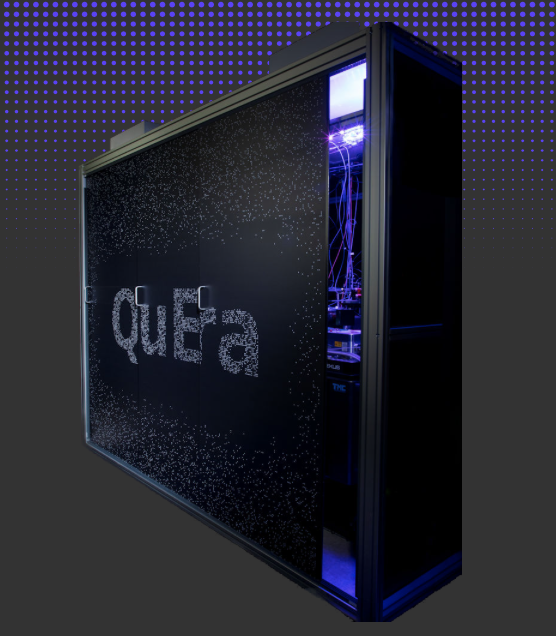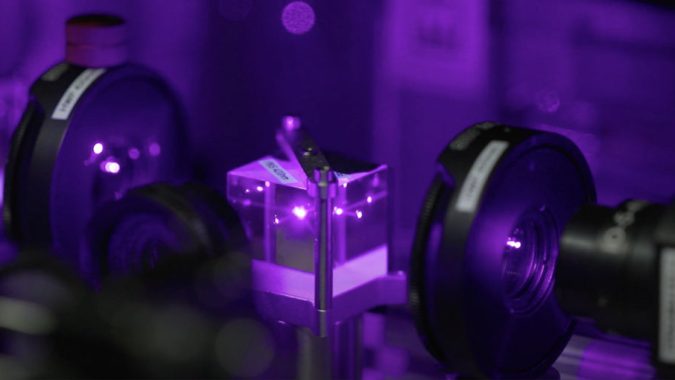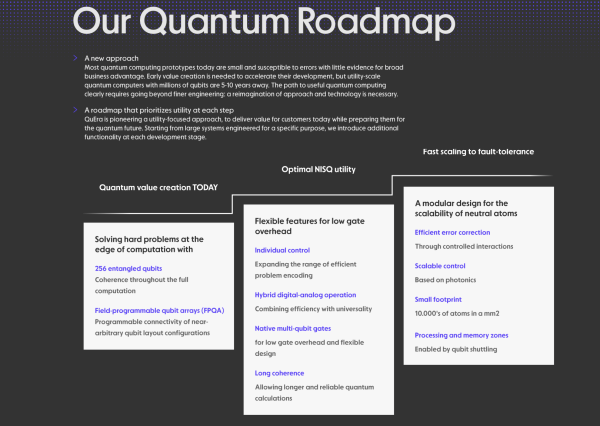Last month, QuEra Computing began providing access to its 256-qubit, neutral atom-based quantum system, Aquila, from Amazon Braket. Founded in 2018, and built on technology developed at Harvard and MIT, QuEra, is one of a growing number of quantum companies betting on neutral atom technology. Advocates, including QuEra, say neutral atom approaches feature significant advantages over other approaches such as semiconductor-based superconducting systems, which require frigid operating temperatures and pose significant control and scaling challenges.
Among the companies betting on neutral atom-based qubit technology are QuEra, Pasqal, Atom Computing, and ColdQuanta. Their progress has steadily brought more visibility and now user access to emerging neutral atom-based quantum systems. QuEra’s recent launch on Amazon Braket is a good example and is another step forward for neutral atom qubit technology.
A distinguishing part of QuEra’s roadmap is to offer analog quantum computing first, hybrid analog-gate-based solutions next, and finally full, fault-tolerant gate-based systems. Pasqal is following a somewhat similar approach. Currently both are focused on delivering analog quantum systems. It’s probably worth noting that 20-year-old D-Wave Systems, which pioneered semiconductor-based quantum annealing computing, has recently expanded its roadmap to include development of gate-based systems.
Most of the work in quantum computing today focuses on gate-based systems. That by-now familiar idea is that gate-based systems are universal and will be able to tackle all computational tasks. The other main approach is analog quantum computing – similar to what D-Wave does, although it does not prefer that term. Quantum analog systems work differently. Instead of performing a series of individual gate functions, which constitute a quantum program, the problem to be solved is formulated in a way that it can be directly mapped onto a collection of qubits. The system is allowed to evolve as a whole, much as it would in nature. (Various techniques allow for some guiding of the evolution.)
In a real sense, analog quantum simulation is more of an experiment resembling the original question – it’s a kind of quantum wind tunnel, if you will, in which the mapped system behaves as it would in nature with all the quantum physics baked in. Like all quantum computers, the results are probabilistic, so you run the problem many times to get a distribution of results which presumably will spotlight the desired (usually, the dominant) result. It turns out there are variety of problems, including select simulations and optimizations, that can be solved this way, and recent work by QuEra and Pasqal have demonstrated such systems can be effective for maximum independent set problems (QuEra paper) and quantum evolution kernel methods (Pasqal paper).

“We are strong believers, right now, that the most advantage that you can get from existing quantum hardware comes from applications that are designed to run efficiently on the hardware, not these abstract, hardware-agnostic approaches,” said Alex Keesling, QuEra CEO in a briefing with HPCwire.
QuEra’s neutral atom approach to quantum computing is fascinating. Basically, a cloud of appropriate neutral atoms – QuEra uses rubidium – are placed in an evacuated chamber. Focused lasers are shined into the chamber and used to create a pattern of sticky spots in which individual atoms become trapped in a 2-dimensional array. The atoms, by their nature, are identical, avoiding many manufacturing worries. More importantly, the trapped atoms can then be exquisitely manipulated and moved around by lasers.
“We don’t need to worry about cryogenic systems. All we have is a small vacuum chamber. Using light through lasers and magnetic fields we can slow down atoms to basically a standstill, and then focus lasers down very tightly to hold the atoms in place,” said Keesling. Lasers are also used to control the state of individual rubidium atoms, whose valence electron can be put into a hyperfine state (spin, representing one or zero). Because the atoms are neutral – unlike ions which repel each other – they can be packed tightly together.
“We can currently pack up to 256 atoms and expect very soon to have 1,000 atoms. This system, without having to reinvent anything, can easily go to 10,000 or more,” said Keesling.
Entanglement between atoms, which are the system’s qubits, is accomplished by pumping up the atoms into a Rydberg state – basically the atom’s outer shell expands. By bringing Rydberg atoms close enough together so their shells overlap, you can cause them to become entangled.
“So, we can isolate individual atoms and we can control their internal state [and] define zero and one for the atom. One of the great things about the platform is that it allows us to take images of the atoms in real time, and then move them around to position them in whatever configuration we want them to be,” said Keesling. An important QuEra advance has been development of the ability to move individual atoms or groups of atoms with great precision (and reasonable speed). That way, encoded qubits can be placed where needed for a particular problem map.
 “This is important, because the connectivity is given by the relative position of our atomic qubits. We can define the connectivity of our ‘quantum chip equivalent’, if you will, at every fraction of a second when we run the machine; this gives us the advantage of being able to encode problems efficiently into the configuration of the atoms basically ‘on the chip’ and we don’t have to go back to a manufacturing facility to build a new chip. We can do this on the fly,” he said.
“This is important, because the connectivity is given by the relative position of our atomic qubits. We can define the connectivity of our ‘quantum chip equivalent’, if you will, at every fraction of a second when we run the machine; this gives us the advantage of being able to encode problems efficiently into the configuration of the atoms basically ‘on the chip’ and we don’t have to go back to a manufacturing facility to build a new chip. We can do this on the fly,” he said.
Broadly speaking, the Rydberg-entanglement range has limits. Keesling said QuEra can get beyond nearest neighbor entanglement to “next nearest neighbor or even third nearest neighbor, and using a few other tricks, you can extend this range more and more, but we actually see a lot of value in having this interplay between things that interact locally.” This ability to relocate encoded qubits, says Keeling, will be the basis of eventual gate-based system.
Right now, said Keesling, “It’s this local connectivity in the analog mode of operation [that] is very helpful for us to effectively draw networks or graphs on the connectivity [in the system], and directly encode some hard, combinatorial optimization problems, and then solve them through this analog evolution of the system.”
Most of the underlying work for QuEra came from the labs of co-founders Mikhail Lukin (Harvard), Vladan Vuletic (MIT), Markus Griener (Harvard) and Dirk Englund (MIT). QuEra has an impressive list of science papers on its website. A fair amount of work is proceeding on identifying application areas and techniques. The company currently has a paper still under peer review but accessible on ArXiv – Quantum optimization with arbitrary connectivity using Rydberg atom arrays – that presents ideas for extending optimization techniques used on its neutral atom platforms. Here’s the abstract:
“Programmable quantum systems based on Rydberg atom arrays have recently been used for hardware-efficient tests of quantum optimization algorithms with hundreds of qubits. In particular, the maximum independent set problem on the so-called unit-disk graphs, was shown to be efficiently encodable in such a quantum system. Here, we extend the classes of problems that can be efficiently encoded in Rydberg arrays by constructing explicit mappings from the original computation problems to maximum weighted independent set problems on unit-disk graphs, with at most a quadratic overhead in the number of qubits.
“We analyze several examples, including: maximum weighted independent set on graphs with arbitrary connectivity, quadratic unconstrained binary optimization problems with arbitrary or restricted connectivity, and integer factorization. Numerical simulations on small system sizes indicate that the adiabatic time scale for solving the mapped problems is strongly correlated with that of the original problems. Our work provides a blueprint for using Rydberg atom arrays to solve a wide range of combinatorial optimization problems with arbitrary connectivity, beyond the restrictions imposed by the hardware geometry.”
 Keesling would say little about applications currently being explored by early users. “We have a few ongoing collaborations. I can’t really disclose them. But I can tell you that we basically see two buckets of applications. One is simulation [or] building quantum twins, as you put it – I really like the wording – and the second is optimization problems.”
Keesling would say little about applications currently being explored by early users. “We have a few ongoing collaborations. I can’t really disclose them. But I can tell you that we basically see two buckets of applications. One is simulation [or] building quantum twins, as you put it – I really like the wording – and the second is optimization problems.”
The company has developed software, Bloqade – “Bloqade enables benchmarking and algorithmic design, incorporating the core strengths of neutral-atom arrays for quantum computing. Accounting for features such as Julia, flexible processor geometry, multi-qubit connectivity, and analog operation modes, Bloqade is an open-sourced community tool.” Bloqade can be downloaded from GitHub or run on Amazon Braket.
By making Aquila available from AWS Braket, QuEra is taking an important step in building its user base and market presence.
In the announcement, Simone Severini, director of quantum computing at AWS, said, “AWS is deeply focused on bringing our customers choice on Amazon Braket to explore scientific research and software development for quantum computing. The addition of Aquila brings neutral atom quantum computing capabilities to everyone on Amazon Braket for the first time. QuEra’s offering helps expand the types of applications that can be performed through Amazon Braket and is a valuable addition for customers focused on exploring neutral atom computing.”
One of the testimonials in the AWS announcement came from Ignacio Cirac, director and head of theory division, Max Planck Institute for Quantum Optics (MPQ), who said, “Special purpose analog quantum devices are likely to outperform classical computation for direct simulation of other quantum systems before we realize a fault-tolerant, universal quantum computer.”
At the moment, QuEra’s Aquila is indeed a special purpose device. It will be interesting to monitor how much interest and use its attracts. One advantage in the near-term goal of pursuing analog quantum computing first is the relative ease with which system size can be increased; while there are hurdles, implementing active error correction isn’t one of them as it isn’t required for analog quantum computing. Error correction is essential for scaling up gate-based quantum systems.
Long-term though, QuEra has much bigger goals.
“Right now we have the purely analog [platform] but then the next jump is going to be to bring online some of the capabilities that allow us to turn this into a hybrid analog-digital [system],” said Keesling. “Partly, the way to do this is to go beyond the idea of the qubit and go to a qudit, meaning something that has three states. That is something that we have in the works. That’s the first step towards enabling more of these capabilities, where we can do more analog evolution where it makes sense and then digital changes to the product to do a more complex kind of computation with it.”
Keesling said, “Going to a fully digital system – that is going to take some time because what we’re building is an architecture that is meant to support logical qubits as the operating unit. We’re looking at a few years still to make that transition full. But we expect that even in the hybrid analog-digital version of our systems, people will be able go digital and have no analog part to it.”
Stay tuned.





























































